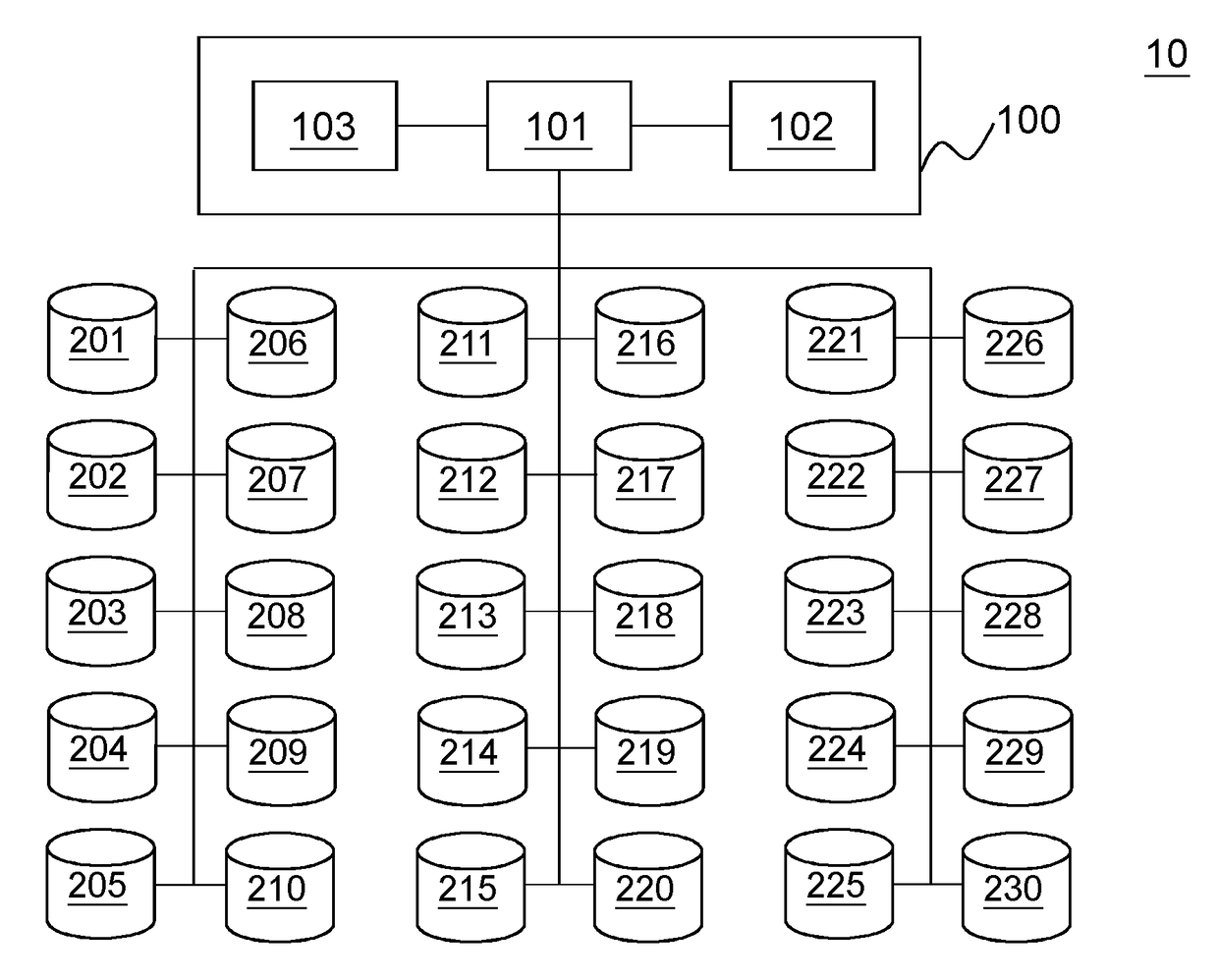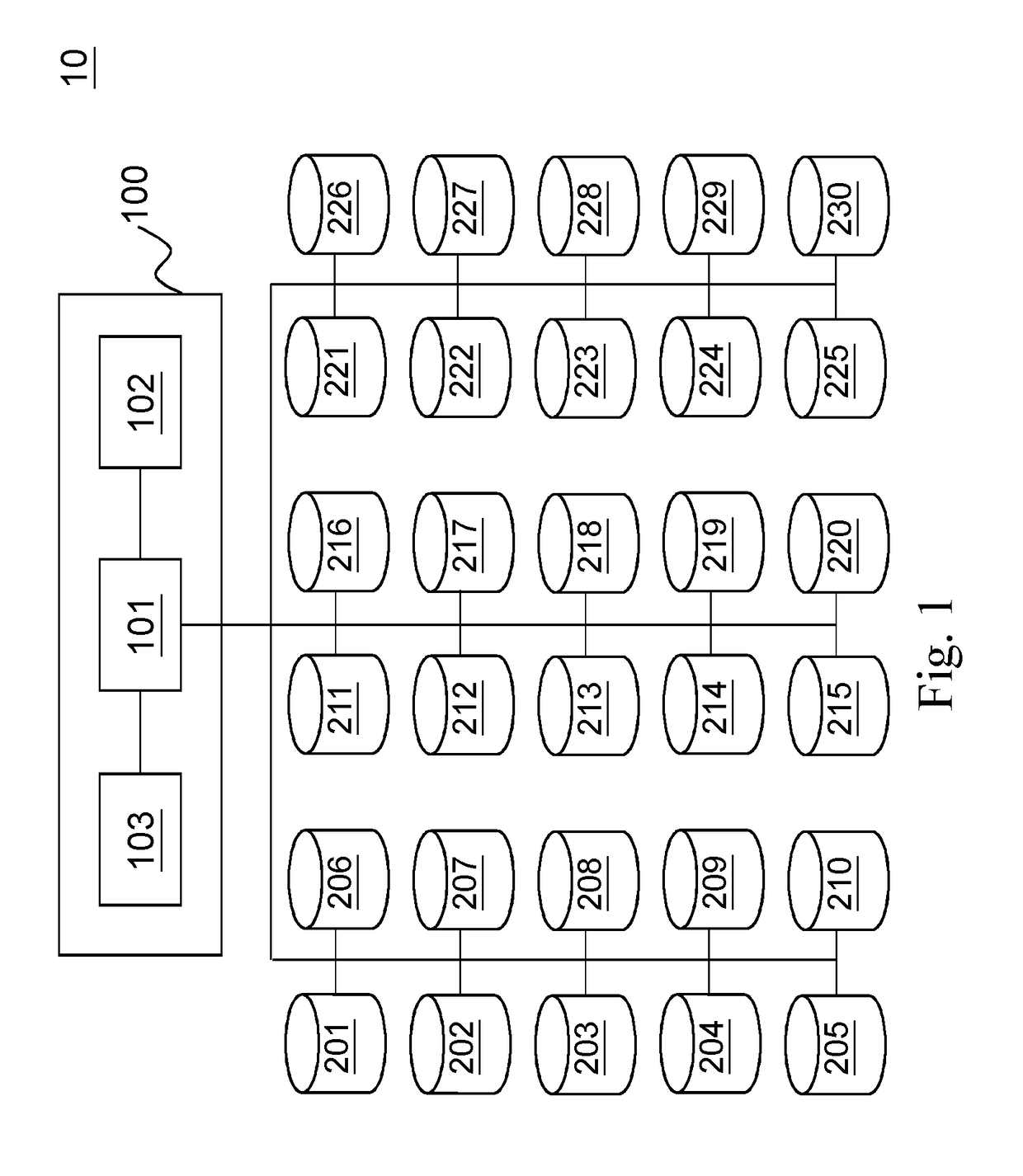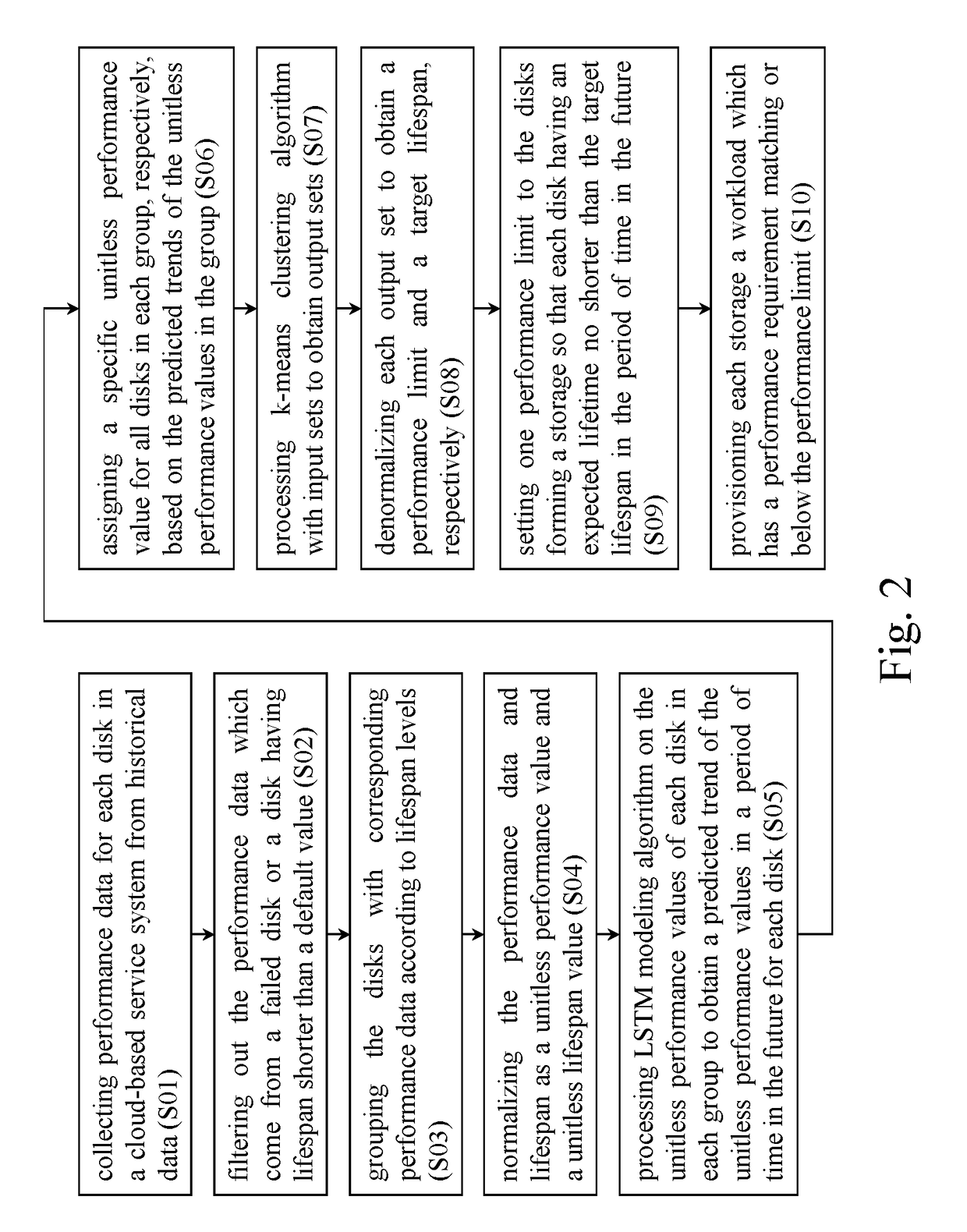Method for extending life expectancy of disks in cloud-based service system and system using the same
a technology of cloud-based service system and life expectancy, applied in the field of extending the life expectancy of disks and a system, can solve the problems of lost data on the disk, failure of the disk to work, and disappearance of stored data, and achieve the effect of extending the life expectancy of the disk and reducing the minimum lifetim
- Summary
- Abstract
- Description
- Claims
- Application Information
AI Technical Summary
Benefits of technology
Problems solved by technology
Method used
Image
Examples
Embodiment Construction
[0019]The present invention will now be described in more detail with reference to the following embodiments.
[0020]An ideal architecture to implement the present invention is shown in FIG. 1. A cloud-based service system 10 includes a host 100 and 30 disks (the disks are numbered from 201 to 230 in order to have a comprehensive illustration later). The host 100 may be a server. It is used to operate workloads run over and process data access for the workload. The host 100 is the hardware to receive requests from client devices, such as a personal computer, a tablet, and a smartphone or other remote devices via the Internet, LAN (Local Area Network), or WAN (Wide Area Network). The disks 201 to 230 are connected to the host 100, for storing data to be accessed from the workloads. Although the number of disks is 30 in the embodiment, it does not intend to limit the application of the present invention. In fact, the cloud-based service system 10 can have any number of disks as long as ...
PUM
 Login to View More
Login to View More Abstract
Description
Claims
Application Information
 Login to View More
Login to View More - R&D
- Intellectual Property
- Life Sciences
- Materials
- Tech Scout
- Unparalleled Data Quality
- Higher Quality Content
- 60% Fewer Hallucinations
Browse by: Latest US Patents, China's latest patents, Technical Efficacy Thesaurus, Application Domain, Technology Topic, Popular Technical Reports.
© 2025 PatSnap. All rights reserved.Legal|Privacy policy|Modern Slavery Act Transparency Statement|Sitemap|About US| Contact US: help@patsnap.com



